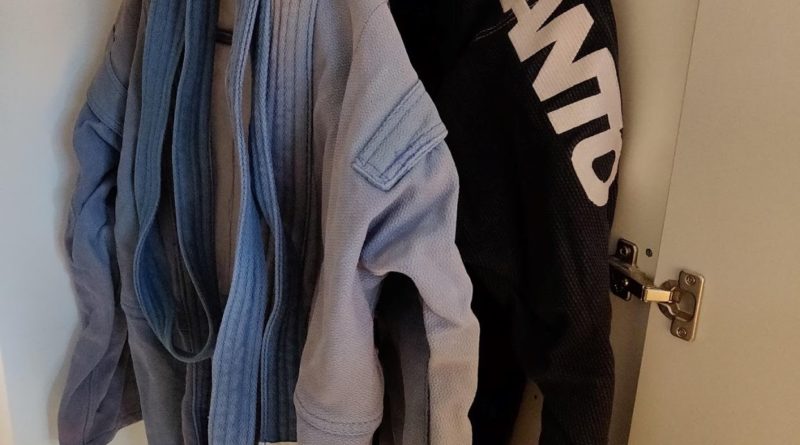From a Sambovka to a Jiujiteiro
Hello folks. I wanted to talk a little about something quite close to me today: transitioning from Sambo into Brazilian Jiu Jitsu. I wouldn’t say I have extensive experience in either discipline, by any means, but perhaps enough to share what I have learned.
For those not familiar with Sambo, it is a combat sport, resembling a combination of Judo and Brazilian Jiu Jitsu.
The standard attire is a Gi top (which looks somewhat different to the BJJ version) and shorts. Sambo has a point system based primarily on throws, but allows for much more ground fighting and submissions than Judo.
This martial art has its roots in Soviet Russia, developed by two men: Orschepkov and Spiridonov, independently of each other, following their extensive encounters with various Eastern martial arts and military combat systems. Their teachings were then combined by one of their students (Kharlampiev), creating what is now Sambo.
I started off with Sambo at around the age of 16. It was the first sport I encountered that I really took a liking to and was willing to take seriously. I trained for about three years before moving away for University, where Sambo was not available in my city.
Even back when I only practiced Sambo we would get a chance a few times a week to spar with BJJ players. They were in the same club as the Sambo classes I took, but I hadn’t gone to any of their classes yet. It became clear that there were differences beyond simply the attire. It was difficult to place at first, but eventually I broke it down.
BJJ players appeared to have much more elaborate styles and games concerning ground fighting than we did. Sometimes this played in our favor, but other times someone entangled me in their ‘web’ and I hit all the traps set out for me.
Sambo, in comparison, seemed significantly more direct than BJJ. If I could clear a path for my technique immediately, it was likely to go through. However, if I was forced into any detours, I would quickly find myself folded like a pretzel and struggling to get my bearing.
In particular, I remember BJJ techniques like the De La Riva or X-Guard being distinctly perplexing. The concept of attacking someone from the bottom, if you didn’t manage to pull them down with you after a throw, doesn’t really exist in Sambo. Additionally, traditional Sambo (also referred to as Sport Sambo) has no chokes. Despite the general principle of not giving your back already ingrained in us, submissions such as the Bow-and-Arrow choke would appear almost ninja-like.
A more holistic, and perhaps important difference was the mentality of BJJ.
For example, practices like flow rolling are seldom seen on the Sambo mats and sparring between peers in a gym is often competitive. This does not denote a lesser atmosphere of mutual respect among Sambists, it’s simply a different approach to martial arts. However, because of this, rolling with some of the BJJ guys was awkward at times. I struggled to find the right balance of on-mat aggressiveness.
After getting to University and dabbling in some MMA training for two or so years, I ended up transitioning to BJJ full time. There I found that, despite a lot of the techniques translating fairly smoothly from Sambo to BJJ, they required a degree of adjustment to fit into the white belt rule set. This is especially true for leg-lock oriented techniques; since Sambo doesn’t have a belt system, all techniques are taught to all students from the start. As Sambo has a time limit on how long the fighters can spend on the ground, the transitions aim for a quick finish, with less time dedicated to maintaining an advantageous position.
The mentality transition took considerably longer than the technique aspect. For a start, the belt system was initially hard to internalize; in Sambo you were either a beginner, a competitive athlete, or a coach. The proper conduct in the gym is more rigid between the ‘levels’ in Sambo than it is in BJJ. Additionally, the overall relaxed and free flowing spirit of BJJ was something I hadn’t seen in combat sports training before.
Furthermore, the BJJ philosophy allows for significantly more creativity.
You often see the higher belts trying out variations on techniques they had arrived at themselves. There is usually a discussion about new possibilities or novel approaches to existing concepts. This practice is relatively limited in Sambo’s more rigid system, at least among the students.
Overall, I am grateful for my Sambo training. The philosophy of the Russian sport is a solid preparation for the mentality necessary for official competition. Generally any interdisciplinary study serves to give the practitioner more flexibility and a broader outlook on the art. But, I am also glad to have switched to BJJ, where there is more space for creativity. There is also the option to be more competitive at times and more relaxed at others.

